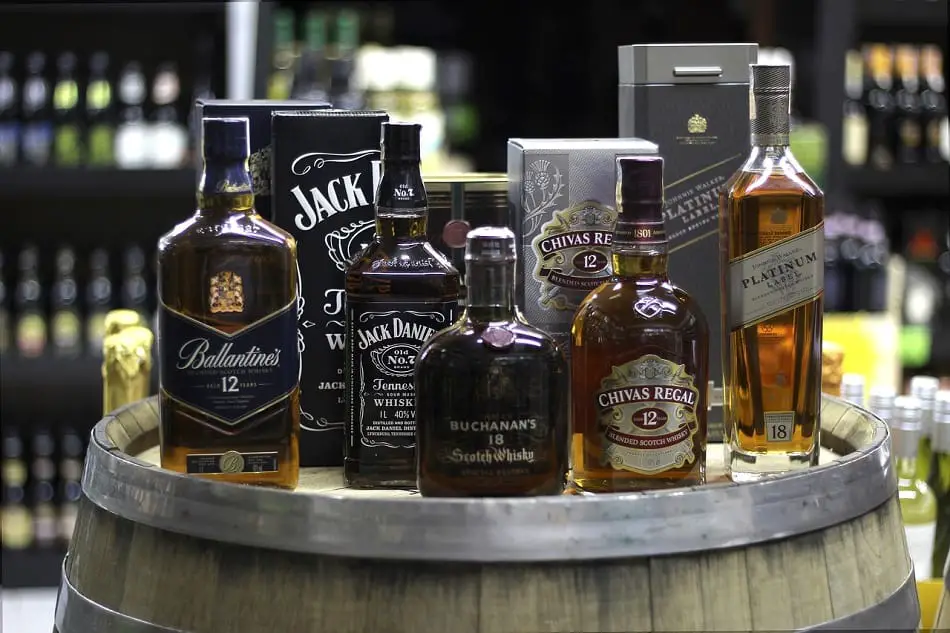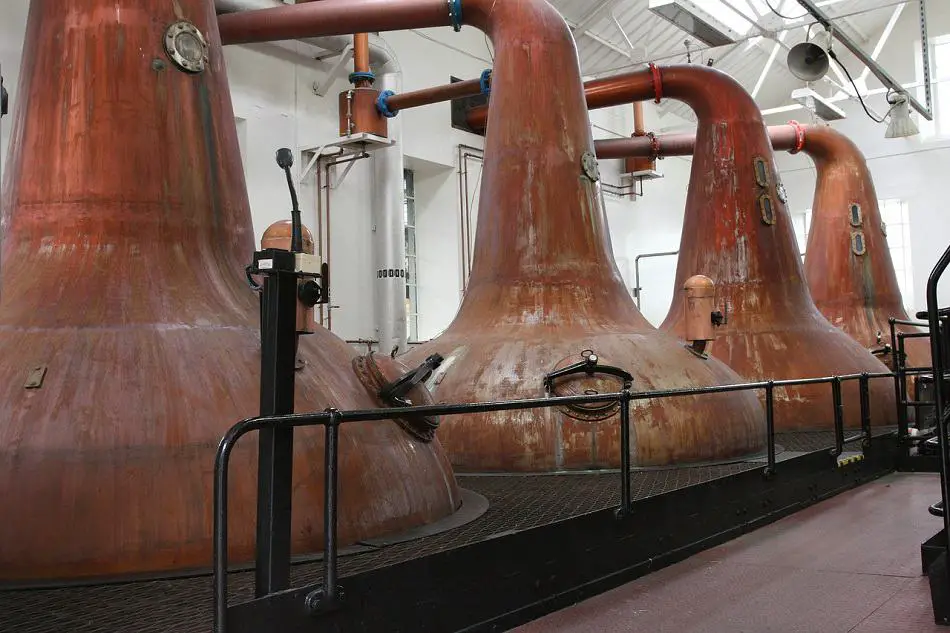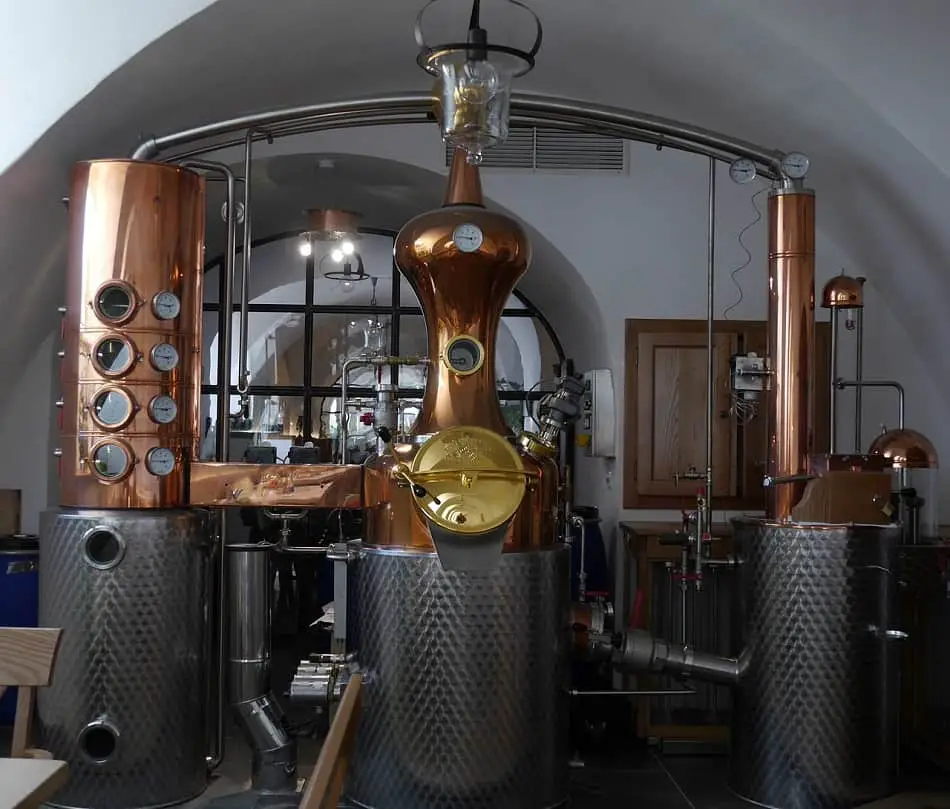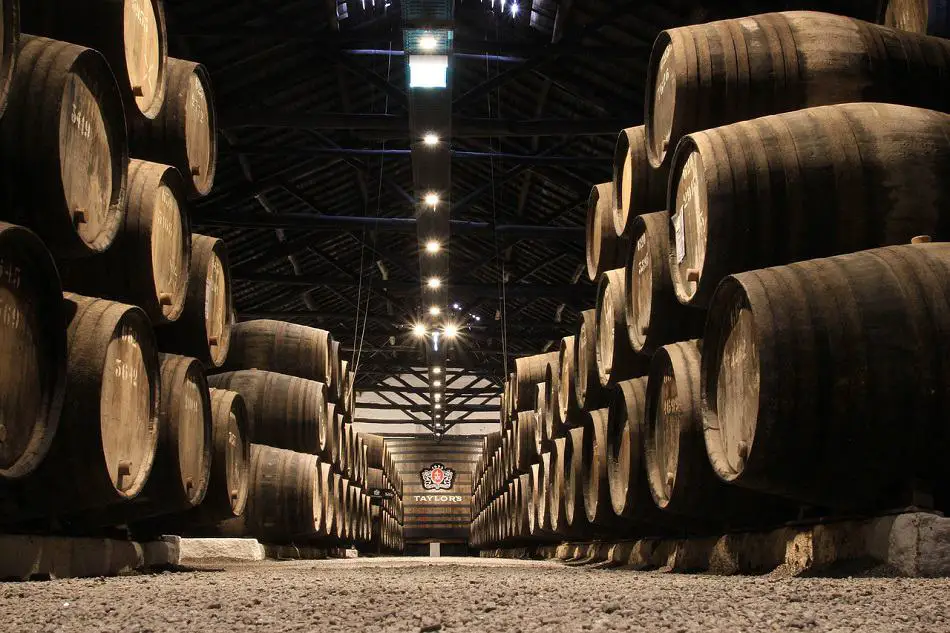There are many whiskeys out there, some of which have completely different, but still delicious, tastes. It’s only natural to wonder therefore how such good fortune occurred and what exactly it is that causes whiskeys to taste different.
Whiskeys taste different because of variations in the whiskey making process of different distilleries. There are several obvious differences and even more subtle ones but there are so many differences at every stage of the whiskey making process, that there’s an almost infinite amount of whiskeys with different tastes.
The basic way of making whiskey is the same the world over. But each distillery has its own variations on this process, often based on traditions that go back decades or more. These differences occur at every stage of the whiskey making process resulting in a uniquely tasting whiskey.
Let’s take a look at these differences in detail and see how they affect a whiskeys taste.

How Differences in the Ingredients Affect a Whiskey’s Flavor
The most obvious difference that will affect the taste of any food or drink is with its ingredients. Whiskey is made from grain, water and yeast. It’s amazing how with only three ingredients you can end up with so many different and still delicious tasting whiskeys but there’s enough variation here alone for that to be possible. Here’s how.
The Grain
Different whiskeys are made using different grains. Any grain can be used to make whiskey, but the most common ones are barley, corn, wheat, oats, and rye. Whiskey can be made with only one grain or with two or three together and in the latter case it can be made with different grain ratios.
Single Malt Scotch is made from malted barley only, so it tastes sweet with lots of caramel, toffee and brown sugar notes. It will have a nutty, smoky, chocolatey flavor.
Irish whiskey is often quite similar to Scotch whiskey but is sometimes made from both malted and unmalted barley giving it a smooth flavor with hints of vanilla.
By law bourbon must be made from at least 51% corn although in fact, it’s usually be made from 70% corn, with the rest of the mash bill coming from other grains. Like barley corn is also very sweet, which is why bourbons have a syrupy taste, with white sugar, cotton candy, vanilla and maple syrup.
American Rye whiskey must be made from 51% rye which makes it more spicy with pepper and cinnamon flavors. It also imparts a dryness to the mouthfeel.
American Wheat whiskey must be made from 51% wheat which makes it taste of wheat bread and honey. It can introduce a gentleness to the whiskey making it smooth.
There are obviously many more examples, but you get the idea. Grains have a certain flavor, and the taste of a whiskey will be different depending on which ones are used and in what ratio. Although to make matters even more complex, since one grain can come in many varieties, even whiskeys with the same grain or grains can taste different.
The Water
Water is used three times in the whiskey making process. Grains (except barley) are cooked in water so its starches can be extracted, converted into sugars and then turned into alcohol. Water is also added to the distillate as it comes out of the still, to cool it down and it’s added to the whiskey after it’s matured in the cask, to lower its ABV before it’s bottled.
Which is why distilleries (and those who add water to whiskey before they drink it) are therefore very careful about their water source and don’t simply add plain old tap water. This is also why some distilleries are located near their water source.

Now water in one part of the world tastes different from water in another and even water from within one country can taste different. This because of differences in the purity of the water and in its mineral composition. Which is why whiskeys from different parts of the world can have very different tastes.
Scotch Whisky from the Highlands (one of the five Scotch whisky regions), whose water is hard and high in minerals have more floral and herbal notes and a chalky texture, whereas Scotch Whisky from Speyside, whose water is soft and low in minerals have honey and citrus fruit notes and a softer, sweeter and smother taste. Islay water is soft but more acidic, so its Whiskies have peppery, iodine, brine, unripe fruit and cereal notes.
Bourbon is made with limestone-filtered Kentucky spring water. The filtering removes impurities, lowers the water’s acidity, and adds minerals, giving it a more tart taste and a higher level of viscosity.
The water that’s used to make Canadian whiskey is sweet, making their whiskey’s taste … well sweet.
The Yeast
Yeast is used in the fermenting process to turn the sugars produced from the starches in the grain into alcohol. Yeast breaks down the sugars and proteins into amino acids and since they are the building blocks of flavors it too has an impact on the whiskey’s taste.
Most distillers use the same species of yeast known as saccharomyces cerevisiae, but many distilleries will have their own strain or strains.
For example, the Four Roses Distillery uses five strains of yeast to produce whiskeys with different aromas and flavors. One strain produces a delicate fruit flavor, another a rich fruit flavor. There’s another strain which produces a herbal flavor, a strain that produces a floral flavor and a final strain that produces a fruity flavor.
The amount of time a whiskey spends in the fermentation stage will also have an effect on it taste, with longer fermentations (five days instead of three) producing more esters, and therefore a fruitier taste.
How Using Peat During Malting Affects a Whiskey’s Flavor
One of the most well-known characteristics of many Scotch whiskies is a peaty, smoky flavor. This is imparted to the whiskey during the malting process where, in order to access its starches, barley is soaked in warm water and then spread out on the floor of the malting house and left to partially sprout or germinate for about five days.
It’s then spread on the grids of a kiln to dry with hot air from below.
Single Malt Scotch is made from malted barley and being dried in a kiln gives it a rich, distinctive taste.
If peat is used to fuel the kiln, it will give the whiskey a smoky, peaty flavor. The type of peat used will determine the precise flavor and the length of time the barley is dried in the peat smoke will affect its strength.
Islay whiskys have a pungent, peaty, smoky, earthy and oily flavor with a hint of salty sea air, brine and seaweed. That’s because Islay is a small island off the west coast of Scotland that’s covered in peat which is exposed to rain and sea spray making it particularly pungent.
How Differences in Distillation Affect a Whiskey’s Flavor
During distillation the fermented liquid that has been made with the grain, water and yeast, is heated until it becomes a vapor and then condensed back into liquid again. The alcohol, which boils at a lower temperature than the water, vaporizes and rises off the rest of the liquid so it can be separated, concentrated, condensed and collected.
There are two types of still used in distillation. A pot still or a column still (also known as continuous or Coffey still). A pot still looks like a pot, with a bowl shape at the bottom, a narrow neck at the top and a protruding arm. Column stills are more industrial-looking and often much taller, containing multiple chambers stacked on top of each other, sometimes reaching several stories high. And they look like columns.


The major difference between the two is the level of ABV a spirit can be distilled to. Column stills can distill spirits to an ABV of 96% whereas pot stills can only distill spirits to between 60% and 80% ABV. The higher the distillation the more of the original grain flavor is removed.
Single Malt Scotches and Irish Whiskey are distilled in pot stills, while bourbon, other American whiskeys and grain whiskeys from Scotland and Ireland are distilled in column stills.
But just because there are only two types of still doesn’t mean that there are only two variations in taste caused by the distillation process. Other factors regarding the stills and the distillation process will affect the taste of the whiskey.
The Material the Stills Are Made From
Pot stills are made from copper which helps strip spirits of unwanted flavor and aroma compounds that would make it unpleasant to drink.
The Size and Shape of the Stills
The size and shape of a pot still will determine which aromatic molecules become a gas and make it up and over the neck. Taller pot stills with longer necks create soft, finer and lighter spirits while shorter fatter pot stills will produce stronger, more intense, fuller and richer spirits.
Some people believe that any change in a still will affect the taste of the whiskey. So much so that if a still needs replacing then they’ll claim you’ll never be able to reproduce the exact same taste in the whiskey again, because the new still will not be an exact replica of the old one as it lacks the dents and scratches of the original still.
The Number of Distillations
The number of times a whiskey is distilled will also affect its taste. Traditionally, Scotch Malt Whisky is distilled twice (although there are exceptions) while Irish Malt Whiskey is distilled three times, the additional contact with the copper of the pot still making it smoother, lighter and fruitier.
The Cut of the Distillate
The cut of distillate from pot stills also affects the taste of the whiskey. This is because there are three parts to the distillate. The first part is the foreshoots or the heads which are high in alcohol and may be dangerous to drink. Alcohol from the end, the feints or tails, are weak but both the heads and the tails are pungent and not great taste wise.
Only alcohol from the middle or the heart of the distillation is used because it’s tastier, but precisely how it’s cut varies from distillery to distillery and will affect the taste of the whiskey. If the cut is made earlier, closer to the heads, the whiskey will be lighter but if the cut is made later, closer to the tails, the whiskey will be stronger, especially if the whiskey is peaty as the tails are usually rich in the phenols that carry the peaty, smoky aroma.
How Differences in Maturation Affect a Whiskey’s Flavor
The whole purpose of the ageing / maturation stage of the whiskey making process, is for the whiskey to absorb flavor from the wood of the barrels it’s stored in. It’s no wonder therefore, that a whiskey receives about 80% of its flavor during this time and that distilleries are meticulous about every factor of this process, as any small change will cause a huge difference in taste.

The Type of Barrel Used
Everything about the barrel a whiskey is stored in during the aging process will affect its taste. That is the wood, whether it’s new or used, toasted or charred and its size.
The Wood. American whiskeys and Scotch are aged in barrels made from American oak which impart mellow, soft, vanilla and caramel flavors. Whiskeys aged in European oak barrels will have a spicy, bitter flavor.
New or Used. If the barrel has been previously used to store other spirits, the wood will have absorbed some of it and will transmit its taste to the whiskey. American whiskeys are generally aged in new barrels, but Scotch is aged in barrels that previously contained bourbon which imparts a creamy, sweet, caramel flavor to the Scotch.
Toasted or Charred. Barrels are either toasted or charred, or something in between.
When barrels are charred by being heavily burned the wood sugars are caramelized and will seep into the whiskey imparting sweet flavors like caramel and honey. The interior of charred barrels is black with a lot of ash residue. The carbon in the ash acts as a filter for the harsher elements of the liquor resulting in a whiskey with a smoother, mellower flavor.
Toasted barrels are heated much more gently so the barrel has a dark brown toast rather than a blackened char. Since the wood wasn’t burned to a crisp the sugars weren’t caramelized so whiskey aged in it will be a bit sharper. Whiskey aged in toasted barrels have a vanilla flavor and spicy notes.
Bourbon, and other types of American whiskey must be aged in charred barrels.
Size of the Barrel. The size of the barrel is important because of the ratio of liquid to flavor-imparting wood.
Smaller barrels will transmit more flavor to the whiskey because it will have a higher spirit to wood ratio, whereas larger barrels will transmit less flavor to the whiskey because it will have a lower spirit to wood ratio.
Most whiskey is matured in 53-gallon barrels but occasionally you’ll find a distillery that uses 30-gallon barrels.
The Storage Environment
The air quality, temperature and humidity of the environment a whiskey is stored in will affect its taste. This is because wood is porous and so elements from the environment are able to impact the contents of the barrel.
Some warehouses are made of brick and will be less effected by the external environment, whereas other warehouses are made of iron and will be more effected by the external environment. Even the way the barrels are stored inside the warehouse – the side of the building, where the air flow is and the specific row – can affect a whiskey’s taste.
Scotch whiskys are aged in cool, wet conditions, so they absorb water and become less alcoholic. American whiskeys are aged in warmer, drier conditions so they lose water and become more alcoholic.
The Scotch whisky regions of Campbeltown and Islay are almost surrounded by the sea and their whiskys absorb some of the briny sea air and salt. The Highlands whiskey region is the largest Scotch region with its distilleries spread far and wide over different types of natural environments, which is why it produces a wide variety of whiskeys.
The Amount of Time a Whiskey Is Stored
The most obvious factor in the aging process to affect the taste of a whiskey is the length of time it spends in the barrel. Obviously, the longer a whiskey is aged the more the wood of the barrel transmits different and intricate flavors to the liquid and the more flavorful a whiskey will be.
In Scotland you need to age whisky for three years before it can legally be called whisky, but most single malts lie in barrels for eight, ten, twelve, or fifteen years. Or longer. The best single malts are aged for 12 to 21 years.
American whiskeys have no legal minimum aging period but if they’re aged for anything more than two years, they’re designated as straight whiskey of whatever grain type is used.
Conclusion
With so many differences at every stage of the process, perfected over hundreds of years of whiskey making, it’s no wonder that there are so many different and still delicious whiskeys.

